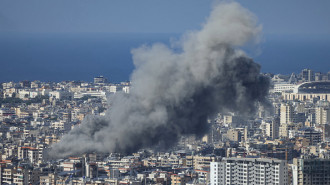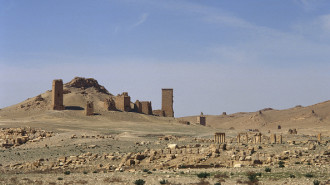Israeli soldiers leak video of themselves blowing up mosque in Rafah
Israeli soldiers have leaked video of themselves blowing up a mosque in the city of Rafah in the southern Gaza Strip.
Video shared on the social media platform X showed the Israeli troops setting up explosives in Rafah's Raed Al-Attar Mosque before it was blown up.
The mosque appeared empty, with signs of bombardment damage in the footage.
One Israeli soldier appearing in the footage smiled as he tossed an explosive in the air.
Palestinian journalist Younis Tirawi shared the footage, saying on X that it had been provided to right-wing Israeli journalists and that there was “nothing inside the mosque”.
One social media user commented that the fact that the mosque was being blown up from within showed that there was no threat inside and that the area had been secured, adding that the mosque’s intentional destruction “is one of the most obvious and blatant cases of a war crime”.
Millions of Palestinians were displaced to Rafah and other areas of the southern Gaza Strip by Israel’s ferocious and indiscriminate bombardment of the north of the enclave, which began in October last year.
However, many were forced to flee again when Israel began an offensive against the city, which borders Egypt, in May.
Israel’s bombardment of the Gaza Strip has utterly devastated the territory and killed at least 41,534 people, according to the Gaza's health ministry, with over 96,000 wounded.
Data from the UN's Satellite Centre (UNOSAT) and geographic database OpenStreetMap indicate that more than 60 percent of Gaza's mosques have been damaged or destroyed.
In total, nearly 59 percent of the Gaza Strip's buildings had been damaged or destroyed, according to satellite imagery analysed by US researchers Corey Scher and Jamon Van Den Hoek. That amounts to close to 169,000 buildings.
Agencies contributed to this report.
![Over 60 percent of Gaza's mosques have been damaged or destroyed [Getty]](/sites/default/files/styles/image_345x195/public/2024-09/GettyImages-2149702754.jpg?h=16013371&itok=qYJhNaFh)



 Follow the Middle East's top stories in English at The New Arab on Google News
Follow the Middle East's top stories in English at The New Arab on Google News


![A group of Palestinians, foreign and Israeli activists gather to participated in an olive picking event on the land in the town of Battir, which is under threat of confiscation by Israel in Bethlehem, occupied West Bank on 8 November 2024. [Getty]](/sites/default/files/styles/image_330x185/public/2182930803.jpeg?h=199d8c1f&itok=__0LgGsa)